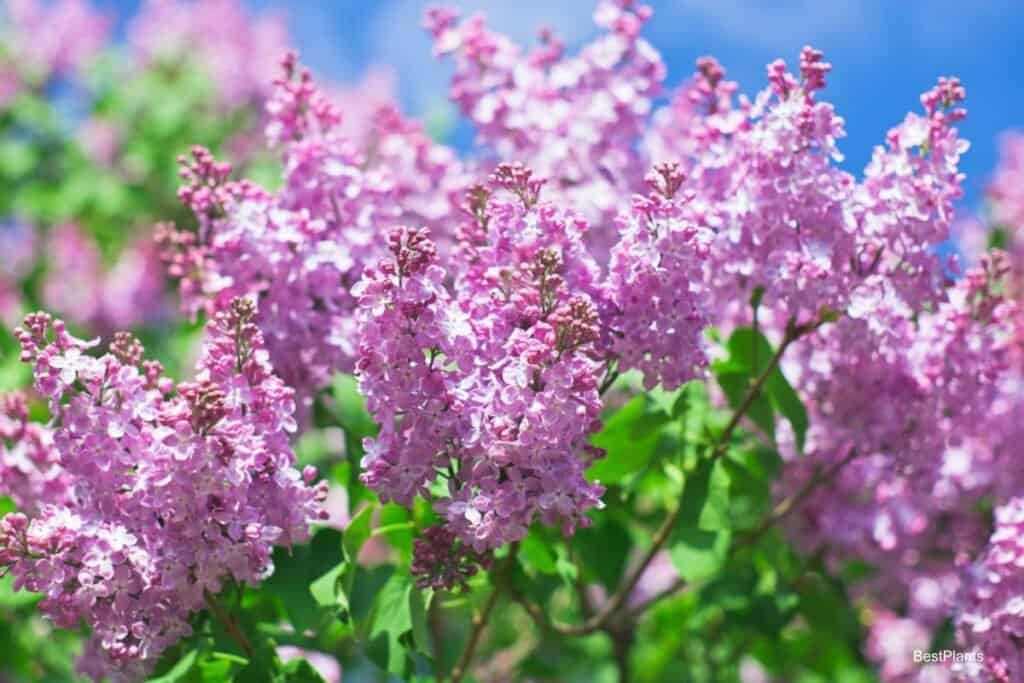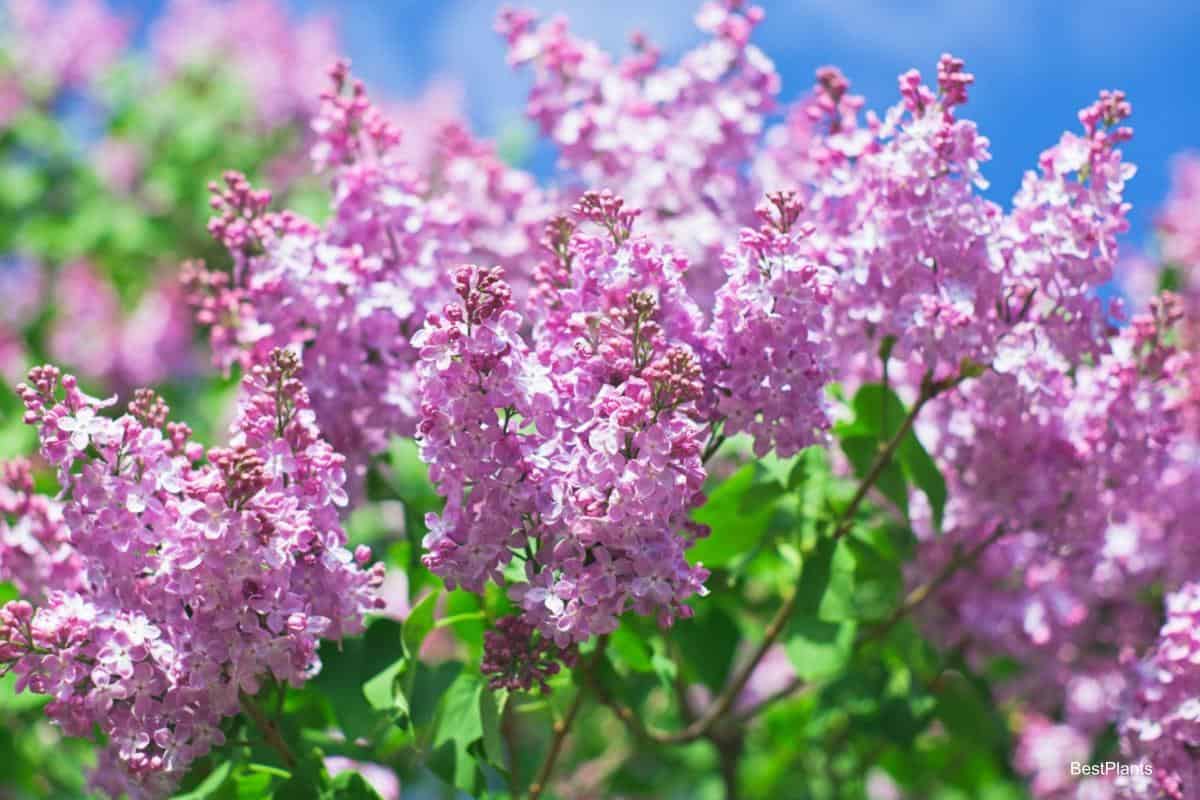It is fitting that lilacs, with their faculty of making human beings remember, go back into time beyond the memory of history. Many a family has been outlived by the lilacs beside its threshold; many a house has risen and stood and fallen into dust, with only the lilac bush by the rubble of its foundation to mark its place.
Yet where the lilac itself came from, no one can tell exactly.

George Washington has left two memoranda, both dated March 1785, about transplanting lilacs from one spot to another on his Mt. Vernon estate.
The operation was successful, for, on Friday, February 10, 1786, his diary read: “The buds of the slack were much swollen and seemed ready to unfold.”
Perhaps the first authentic written record of this fragrant shrub on the North American continent appears in a manuscript garden book by Thomas Jefferson, dated 1767.
In this, he speaks twice of lilacs, first about their being planted at his Shadwell, Virginia, birthplace, and later in a list labeled Monticello, September 30.
Lilacs Were Heirlooms
But long before these country gentlemen and statesmen made their garden notes, the common folk who settled the country had brought their lilacs with them to remind them of what was lovely in earlier days. As they moved westward, opening new frontiers, the faithful shrub spread with them across the land.
How many a pioneer woman, breathing the fragrance of lilacs on a warm May evening beside her cabin doorsill, felt a grateful sense of security with the past and with the future? This we know, not from records in books — for the women who carried the common lilac across America were too full of creating and tending to have time for writing but from the mute historical evidence of century-old bushes growing close to the habitations of early settlers.
Facts about the introduction of the lilac into this country are as misty as its bloom on a mellow night in Spring. The oldest dated lilacs in America are probably those at George Washington’s home at Mt. Vernon.
Close competitors are those at the Governor Wentworth Mansion at Portsmouth, New Hampshire, which were planted about 1750 and were reported, a generation ago, to be ten inches in trunk diameter.
One writer thinks that a French Huguenot, Dr. John Durand, who settled in New Rochelle, N.Y., about 1690, brought the first lilacs to America. The great botanist, John 13artram, is said to have complained in 1753 that lilacs were already too numerous in America. Another unverifiable source says that as early as 1652 lilacs and the snowball ornamented many a cottage yard.
Denizens of Dooryards
All in all, no one individual was likely solely responsible for bringing lilacs to America; many an immigrant had a well-wrapped root of the favorite shrub in his bundle, a treasure too obscure or too intimate to be listed on a bill of goods.
Once established here, it spread by a natural process a well-rooted sucker from the door-side bush being given, as is the way of women with gardens, to the daughter as she left for her own new home, or to a neighbor starting with her husband for wilds unknown — a root being offered with love and tears for sweet memory’s sake.
Now there are lilacs in practically every state in the Union, although they seem to have a nostalgic preference for the homely hills of New England.
Lilacs, as we well know, are not natives of America, but came here from Europe, to which, in turn, they had traveled from somewhere in the East. Some sixty years before the Pilgrims made their epochal landing at Plymouth, a Flemish scholar and traveler, Augier de Busbecq, brought lilacs from Constantinople to Vienna.
Busbecq, who was serving as an envoy from Emperor Ferdinand I to Turkish Sultan Solyman established the plant in his Viennese garden, where it came to be known as Turkischer holler. Here was its first recorded flowering in Europe. Soon it was popular in Italy, Flanders, Spain, and England. In King Henry’s royal gardens at Nonsuch, there was a white marble fountain surrounded by six “black trees.”
The name of lilac reaches deep into far-off time and place, being derived from the Turkish Leila, the Arabian link, and the Persian lilac, which in turn are related to the Hindustani nil and the Sanskrit nila, meaning dark blue indigo. The scientific name, syringa, is of Greek origin, syrinx brings the Greek word for the pipe.
Because the sturdy lilac shoots have soft, pithy stems which can easily be hollowed out, they were formerly used in pipe-making. Syrinx, according to Ovid’s “Metamorphoses,” was the nymph who, fleeing from the pursuit of Pan, was changed into a reed, from which Pan made the first flute.
Hence the “pipes of Pan.” We wonder whether the fair youth on Keats Grecian Urn had an instrument made of the lilac stalk as he sat “beneath the trees.. forever piping songs forever new, piping those unheard melodies that are sweetest of all in their sadness.
What’s in a Name?
Proof of the friendly intimacy in which the lilac is held are the many vernacular or “pet” names which the shrub has earned in various languages. The Russians call it then, an offshoot, probably, of the syringe. One of the earliest written records of it in Europe was that by a French naturalist who described the Turk’s extravagant love of it and called it the queue de Regnard.
The contemporary English translated it into the fore tail and the Germans into Fuchsschwanz. In Cornwall and Devon, because of its synonymy with the month of high Spring, it has been known as May-flower, which has German counterparts in Mayblum and Pfingst Blum (Whitsuntide-flower).
Princess-feather and Princyfeather, local names for it in England, refer, as does the widespread German Flitderbusch, to the fluttering swish of its flower trusses; while the Austro-German name Hollander may derive from the easily hollowed stem or, as one authority would like to believe, from the goddess Holla, protectress of the hearth and home.
Its early use for pipes is also reflected in the regional British names pipe-tree and blow-pipe, and, as already mentioned, in the botanical term syringa. Variants in spelling have also been common, from Francis Bacon’s leach tree to James Rusell Lowell’s Blaylock-bush.
Most poetic are two German names, Huck Auf die Magd, which may be freely translated as pick-a-back, and Jelangerjelieber, which has no exact English equivalent but means, dialectically speaking, the longer we know the more we love.
44659 by Dr. Helen Mccadden
